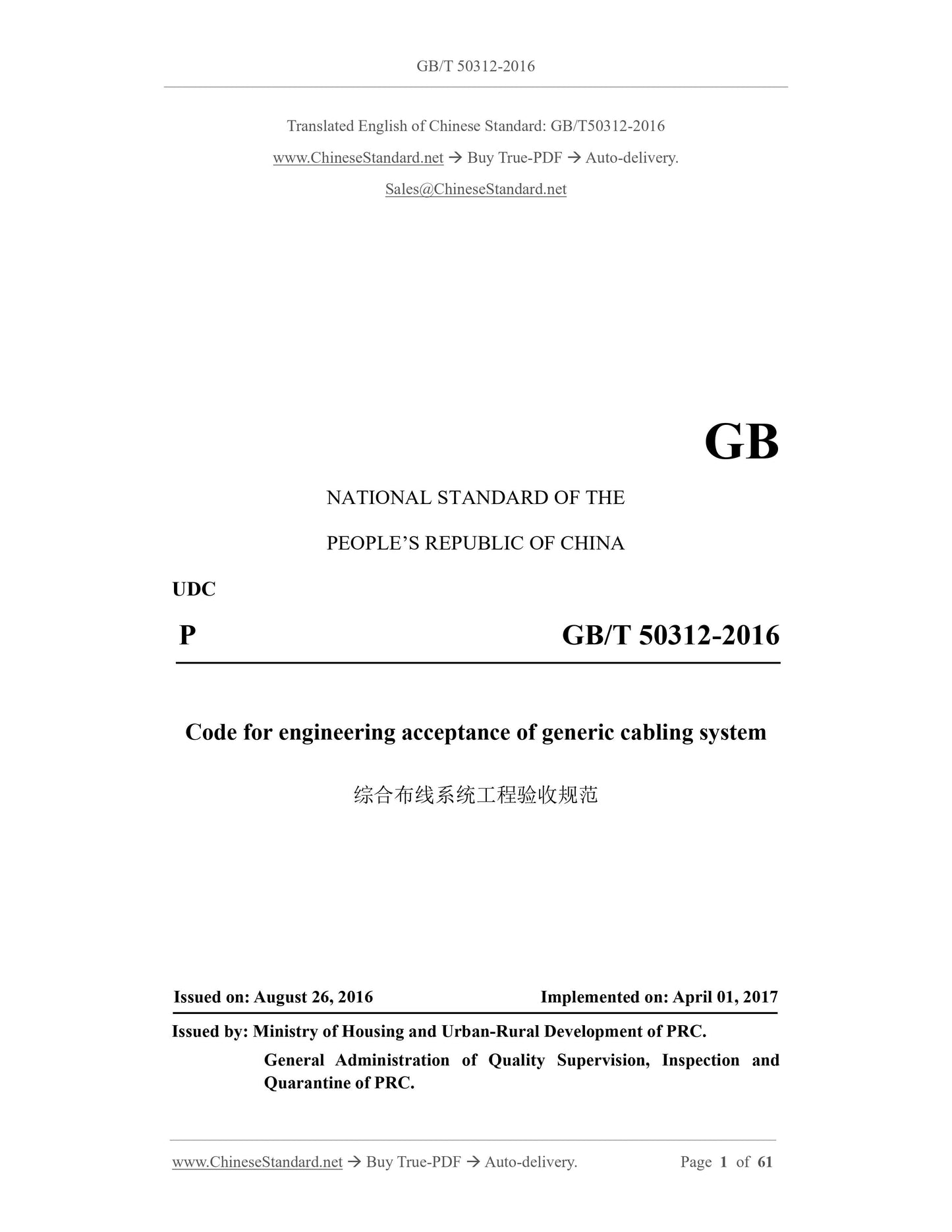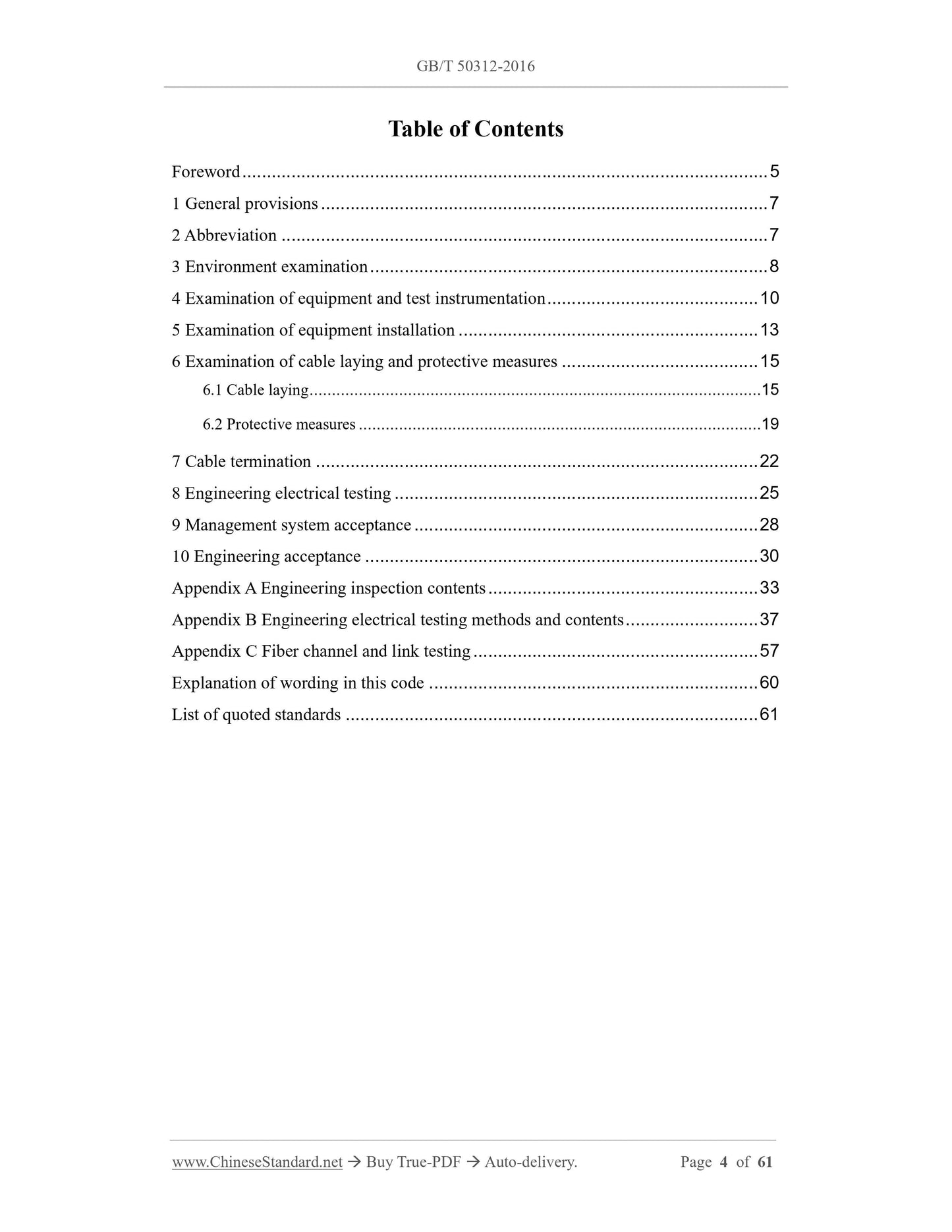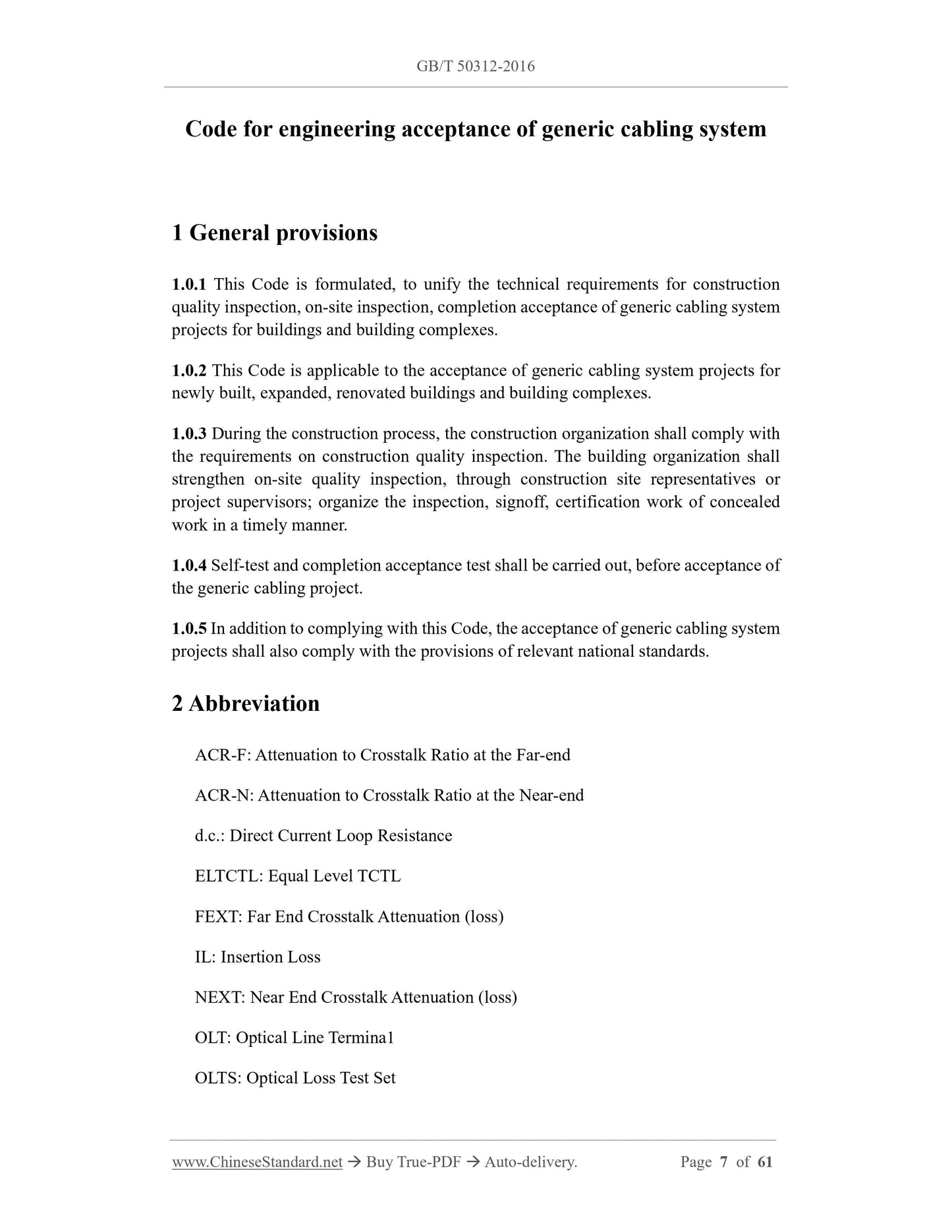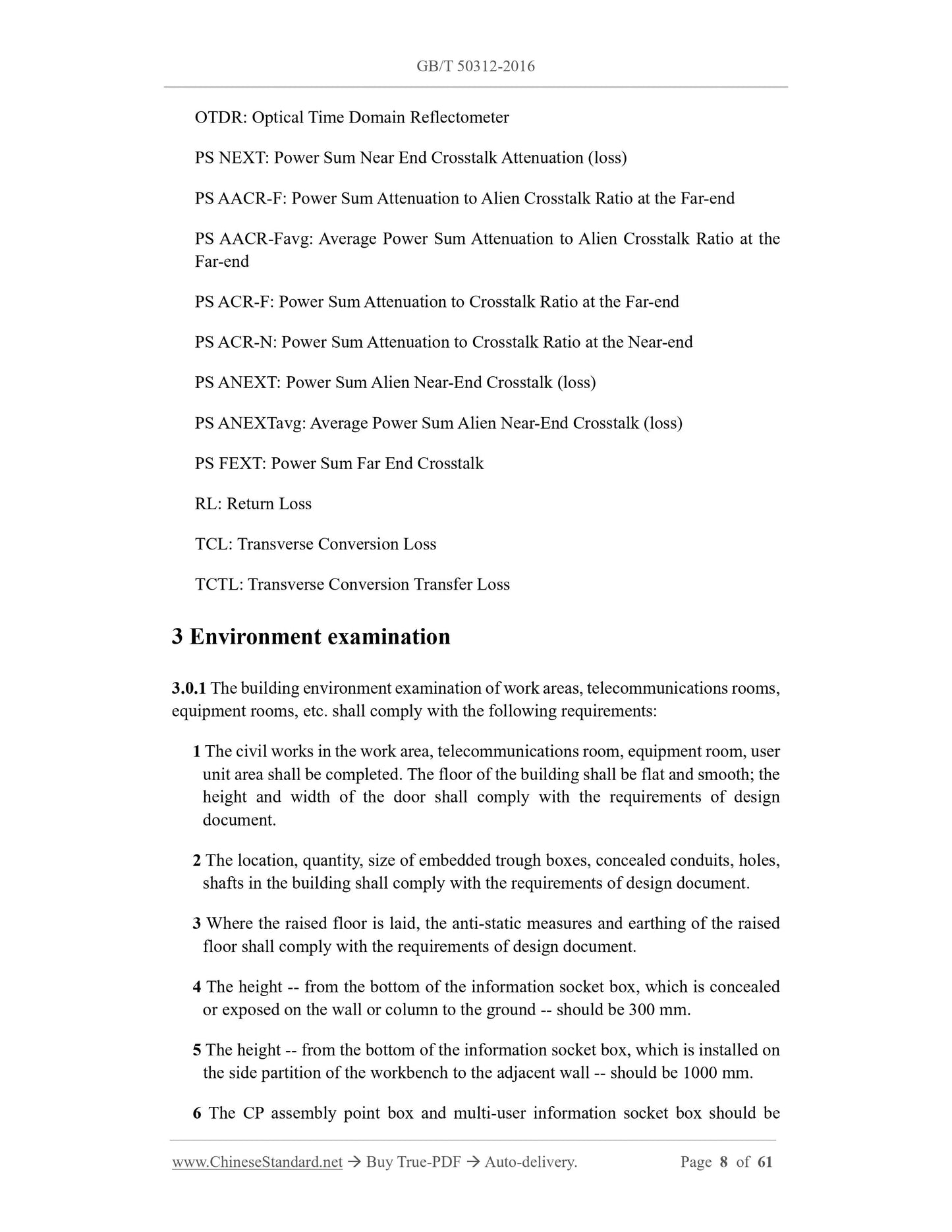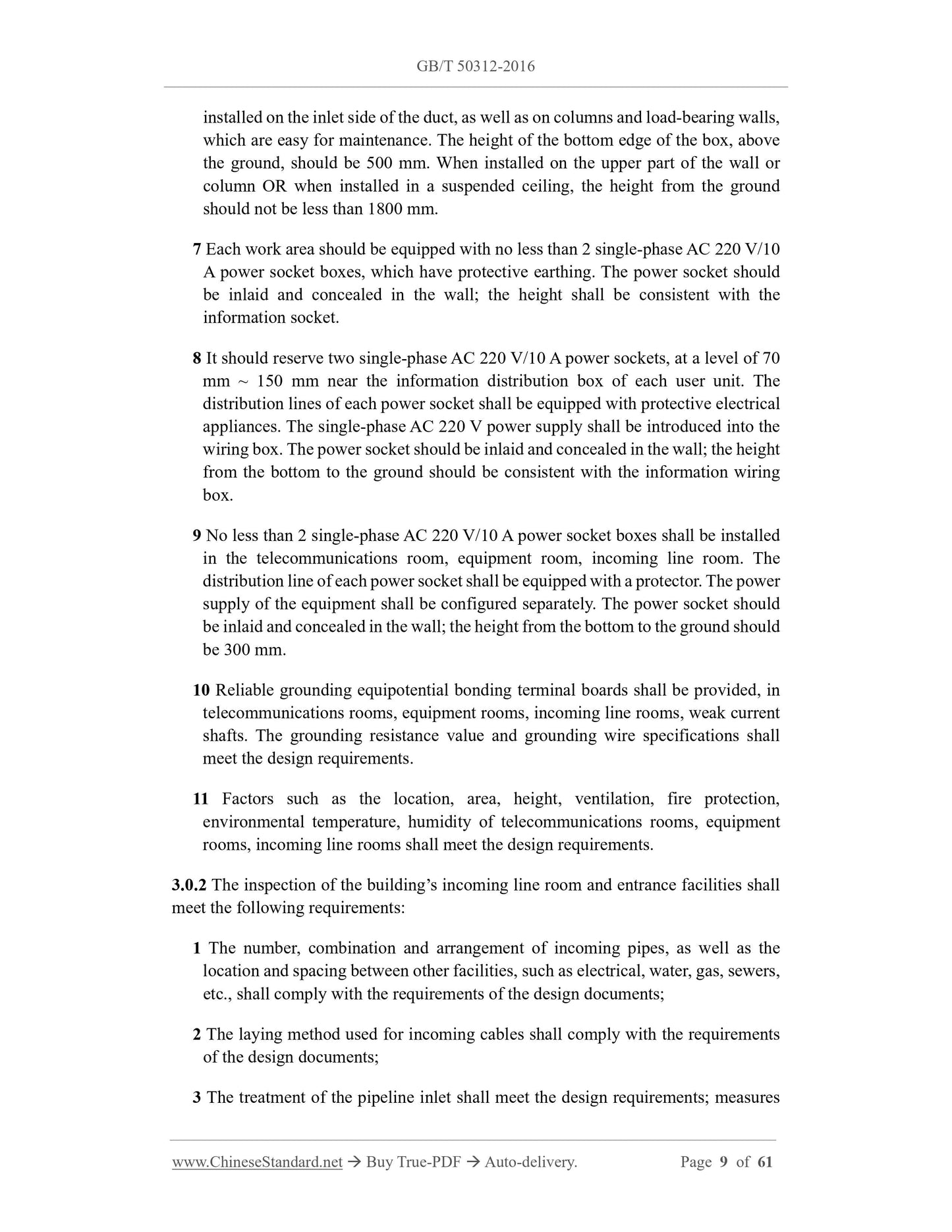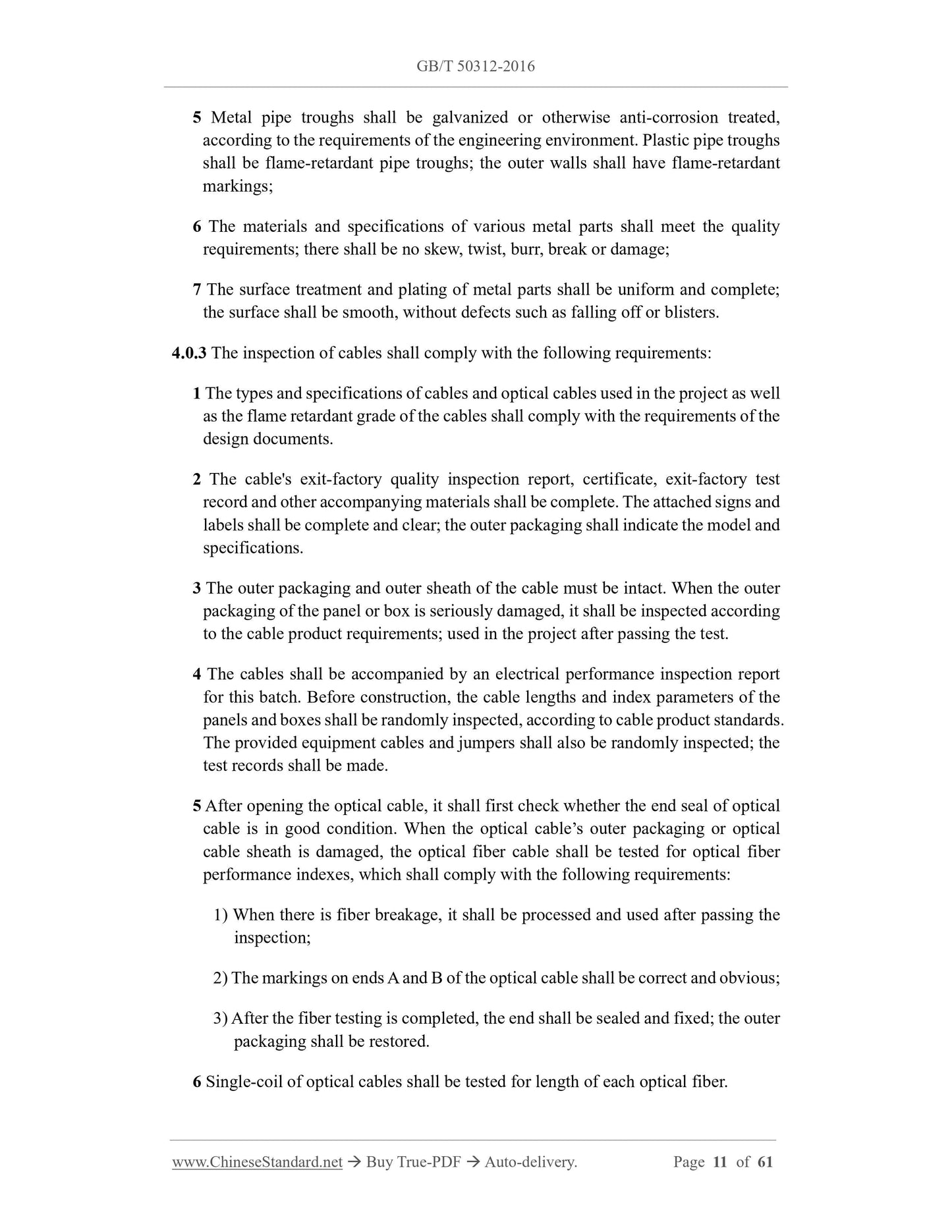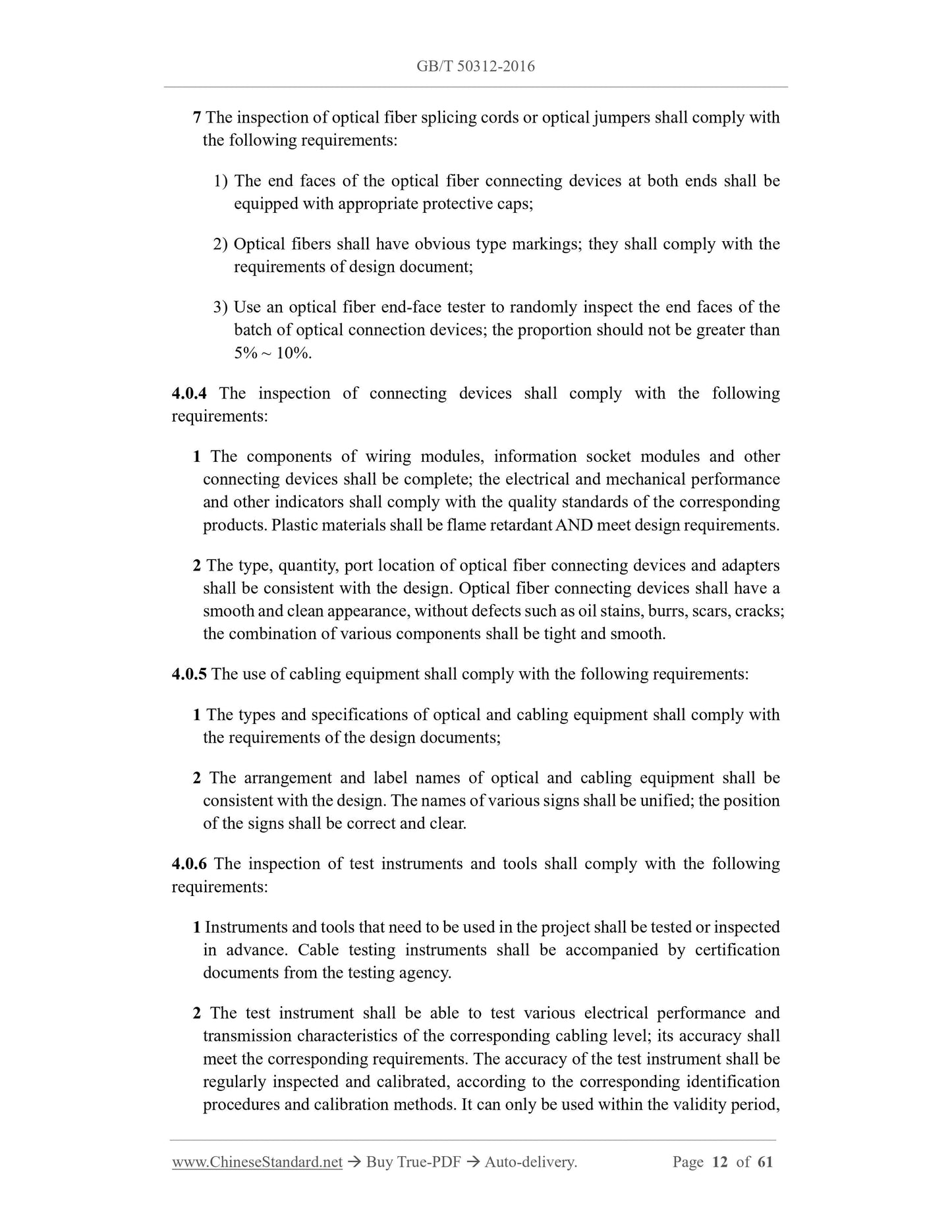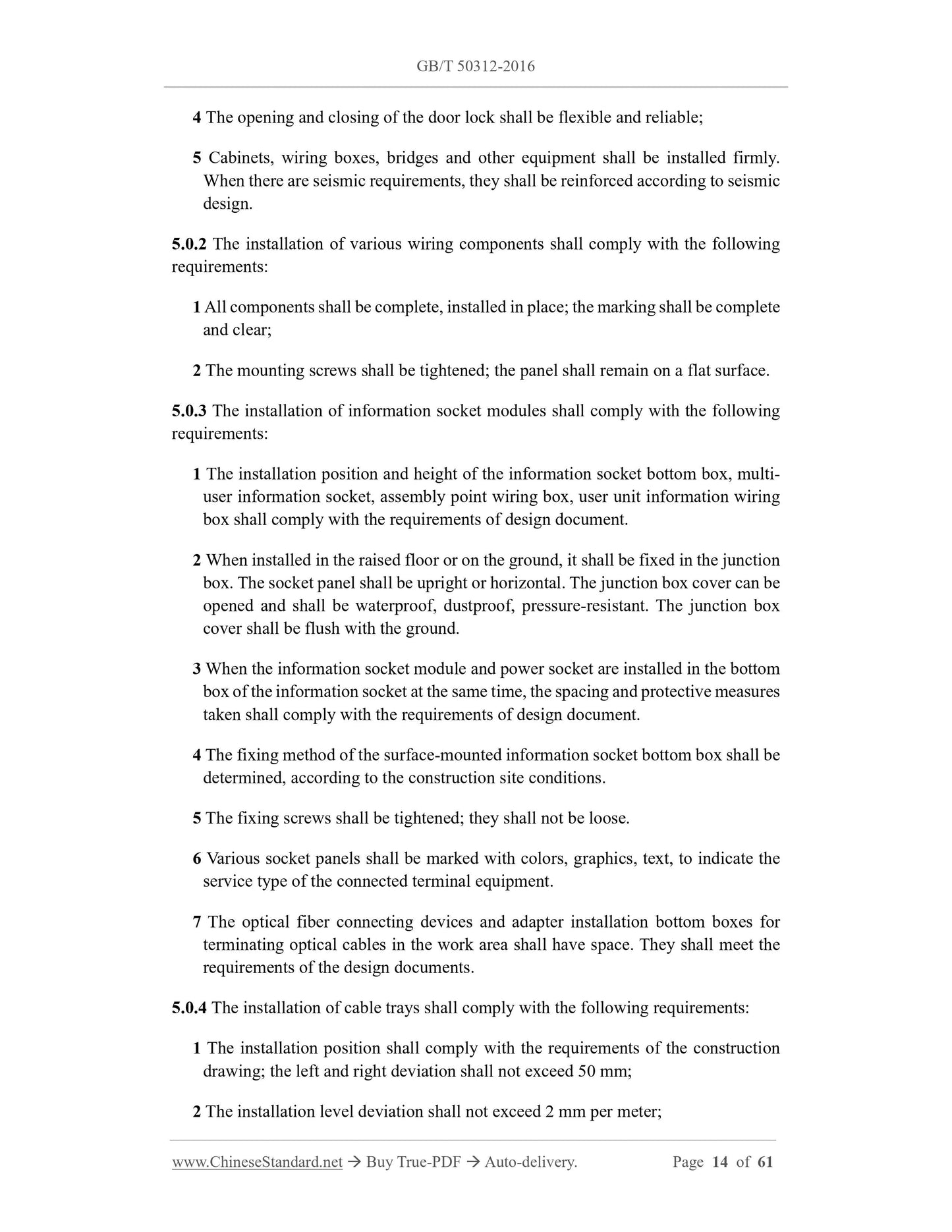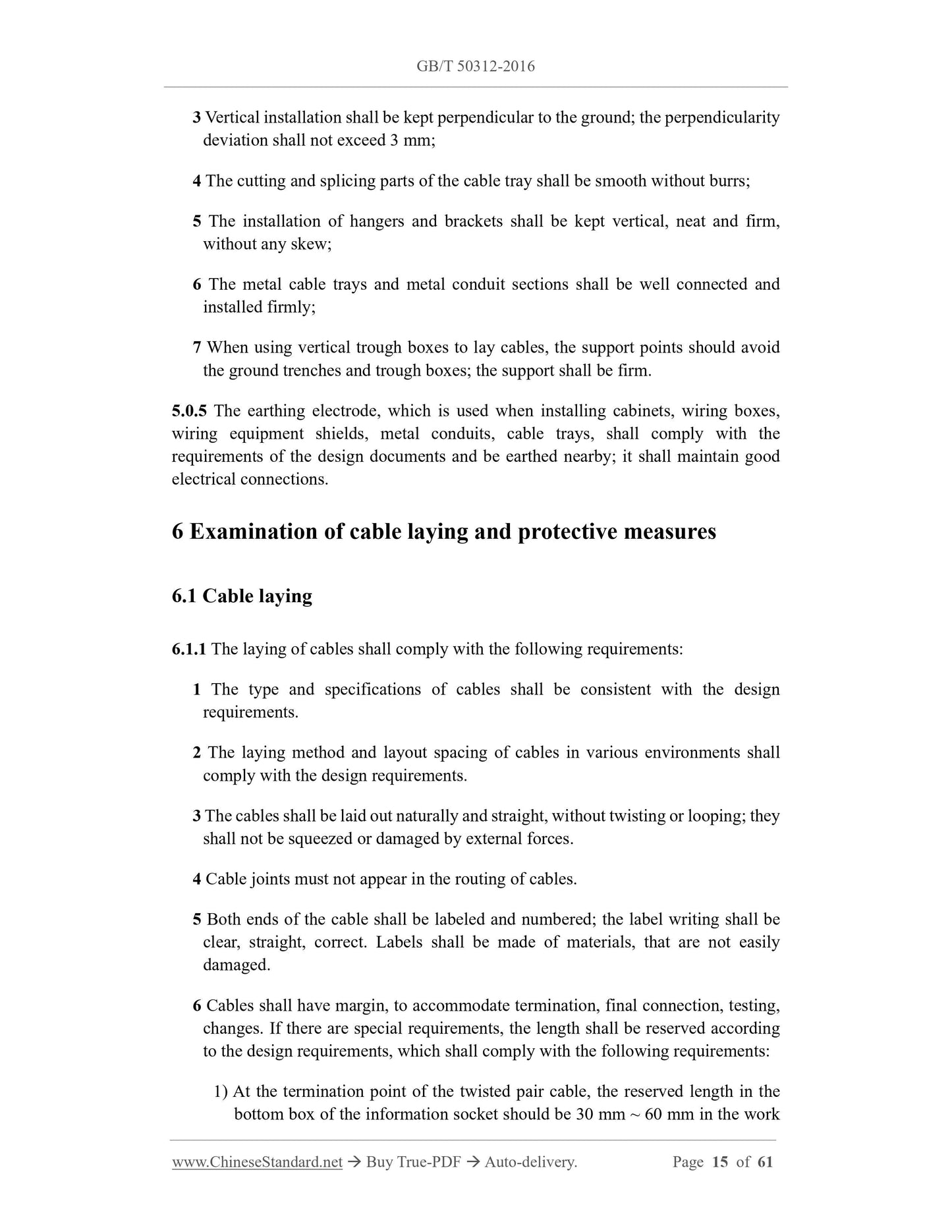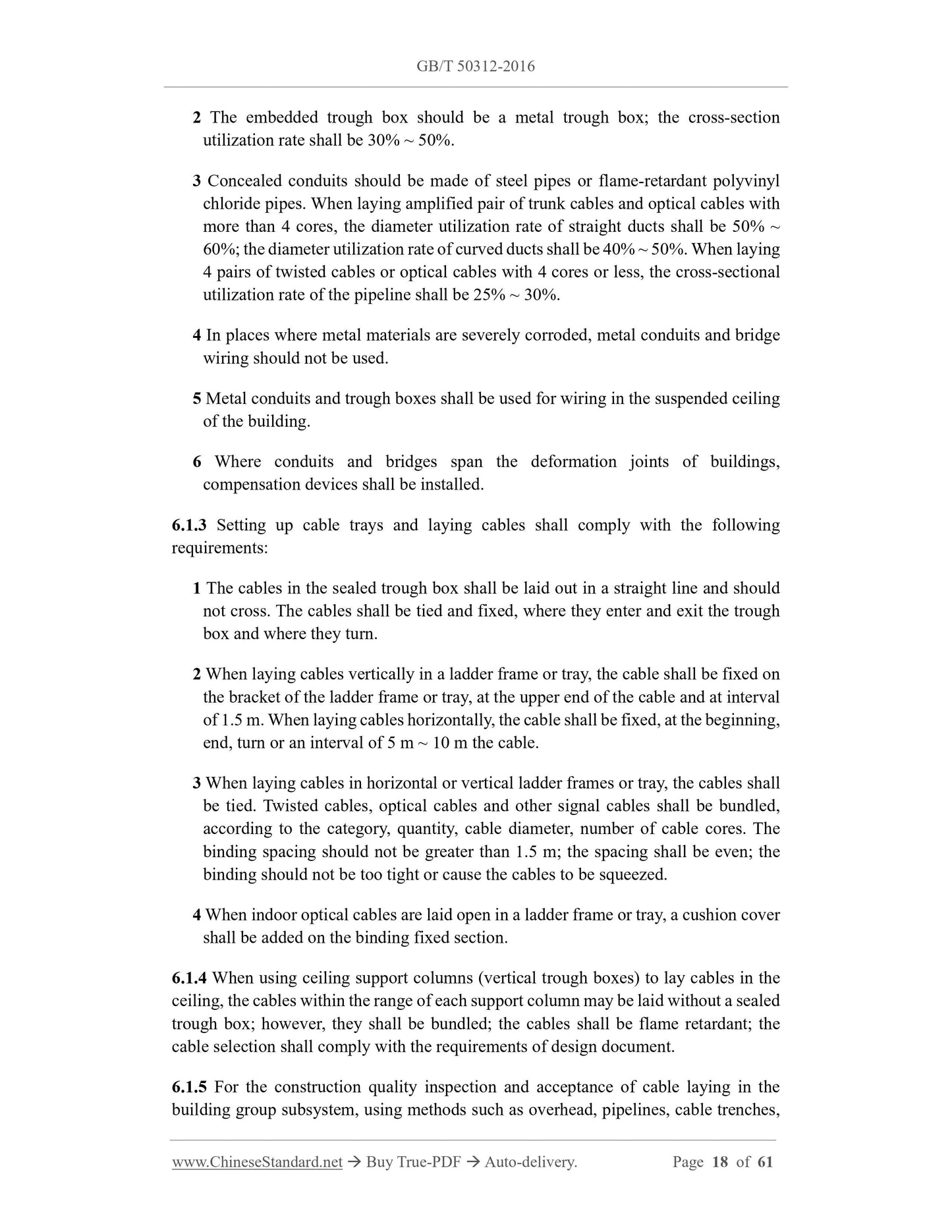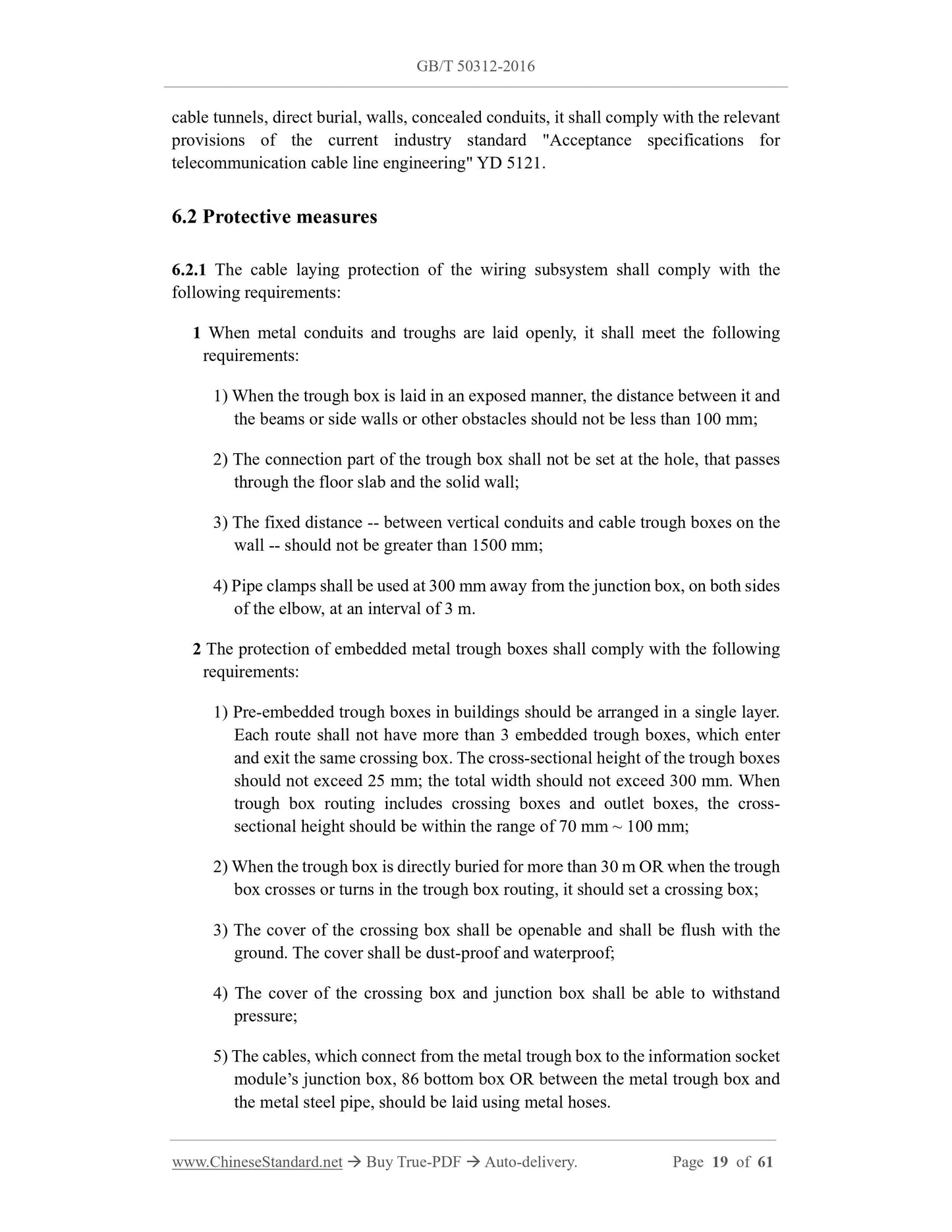1
/
of
12
www.ChineseStandard.us -- Field Test Asia Pte. Ltd.
GB/T 50312-2016 English PDF (GB/T50312-2016)
GB/T 50312-2016 English PDF (GB/T50312-2016)
Regular price
$1,520.00
Regular price
Sale price
$1,520.00
Unit price
/
per
Shipping calculated at checkout.
Couldn't load pickup availability
GB/T 50312-2016: Code for engineering acceptance of generic cabling system
Delivery: 9 seconds. Download (and Email) true-PDF + Invoice.Get Quotation: Click GB/T 50312-2016 (Self-service in 1-minute)
Newer / historical versions: GB/T 50312-2016
Preview True-PDF
Scope
1.0.1 This Code is formulated, to unify the technical requirements for constructionquality inspection, on-site inspection, completion acceptance of generic cabling system
projects for buildings and building complexes.
1.0.2 This Code is applicable to the acceptance of generic cabling system projects for
newly built, expanded, renovated buildings and building complexes.
1.0.3 During the construction process, the construction organization shall comply with
the requirements on construction quality inspection. The building organization shall
strengthen on-site quality inspection, through construction site representatives or
project supervisors; organize the inspection, signoff, certification work of concealed
work in a timely manner.
1.0.4 Self-test and completion acceptance test shall be carried out, before acceptance of
the generic cabling project.
1.0.5 In addition to complying with this Code, the acceptance of generic cabling system
projects shall also comply with the provisions of relevant national standards.
Basic Data
| Standard ID | GB/T 50312-2016 (GB/T50312-2016) |
| Description (Translated English) | Code for engineering acceptance of generic cabling system |
| Sector / Industry | National Standard (Recommended) |
| Classification of Chinese Standard | P33 |
| Word Count Estimation | 91,979 |
| Date of Issue | 2016-08-26 |
| Date of Implementation | 2017-04-01 |
| Older Standard (superseded by this standard) | GB 50312-2007 |
| Regulation (derived from) | Ministry of Housing and Urban - Rural Development Notice No.1288 of 2016 |
| Issuing agency(ies) | Ministry of Housing and Urban-Rural Development of the People's Republic of China; General Administration of Quality Supervision, Inspection and Quarantine of the People's Republic of China |
Share
